⬆️ Why South is Up
In modern times and in the west, we tend to draw our maps with North at the top of the page.
(This means that East is on the right and West is on the left.)
But in ancient China, they drew their maps with South at the top of the page.
Which Direction is Up?

Nowadays, we tend to draw maps with North facing up. But it wasn't always like that...
For a long time, many cultures drew their maps with East facing up. This was probably done because east is the direction of the rising sun, so it's easy to locate.
(This is actually where the word "orientation" comes from. Orient = East. So if you are trying to get your bearings and "orient" yourself, you need to know which direction is east.)
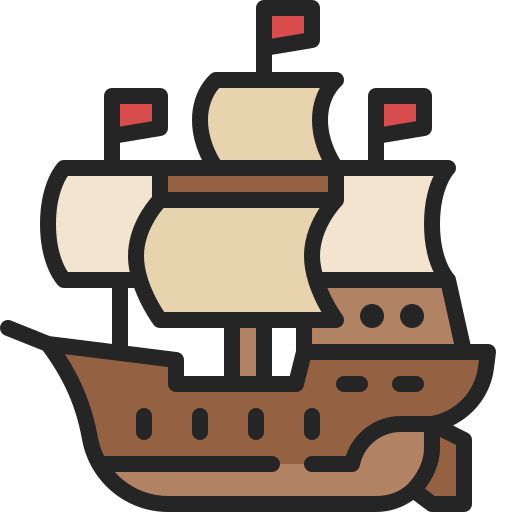
Once sailing became more prominent, people started drawing their maps with North at the top of the page, because sailors would navigate using the North Star (and they had compasses that pointed north).
But in China, they drew their maps with South facing up.
Why?
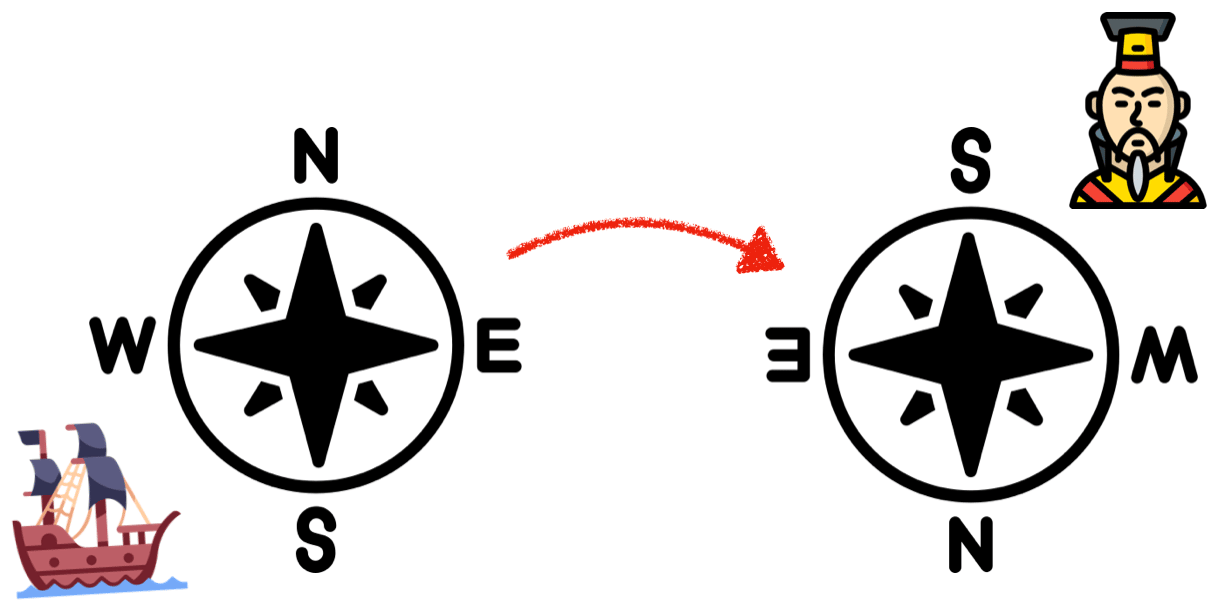
South is Up?
If you've studied Daoism or Chinese medicine, you may have encountered sayings like, "The sage faces south," or "the Emperor sits in the south."
So in China, South was the auspicious direction.
Why was that?
It probably has to do with the fact that South gets the most sunlight (at least when you're in the northern hemisphere -- sorry Australians). Because of the tilt of the earth's axis, when you're in the northern hemisphere, the sun spends more time in the south. This is often called "southern exposure".
So if you're building a house, you probably want the windows to face south so you get the most warmth from the sun. If you're planting crops on a hill, you probably want them on the south side so they get more light.
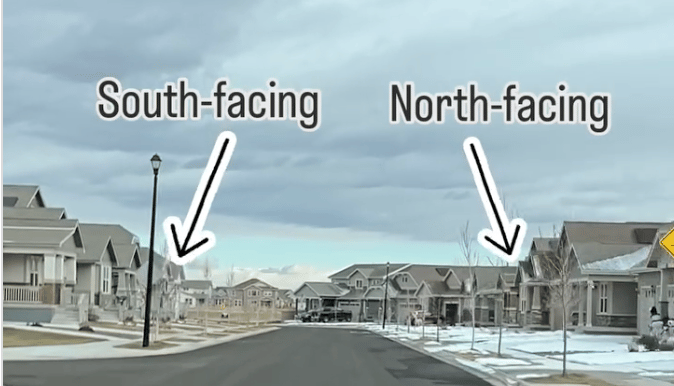
Fun fact: this actually comes up in Colorado when it comes time to shovel snow. If your house faces south, then you get lots of sun that will melt the snow in your driveway, so you don't have to shovel as much. But if your houses faces north, you shovel a lot more.
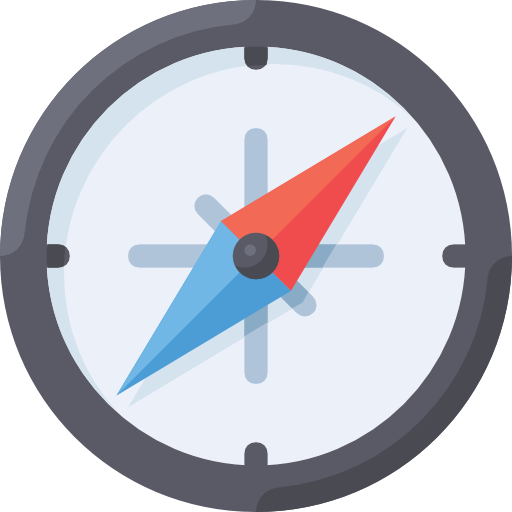
The magnetic compass was actually invented in China during the Han dynasty. They called it a "South-Facing Fish" (指南魚) because they believed that the needle pointed south.
(Technically they were correct: on a compass, half of the needle points north and half of the needle points south.)
But back then they didn't use the compass for navigation; they used it for Feng Shui. Knowing which direction was south was useful for building houses and planting crops.
So that's why Chinese people chose South as the most important direction, rather than East or North like the Europeans did.
Implications in Chinese Medicine
So what does this have to do with TCM?
Well, it comes up in a few ways...
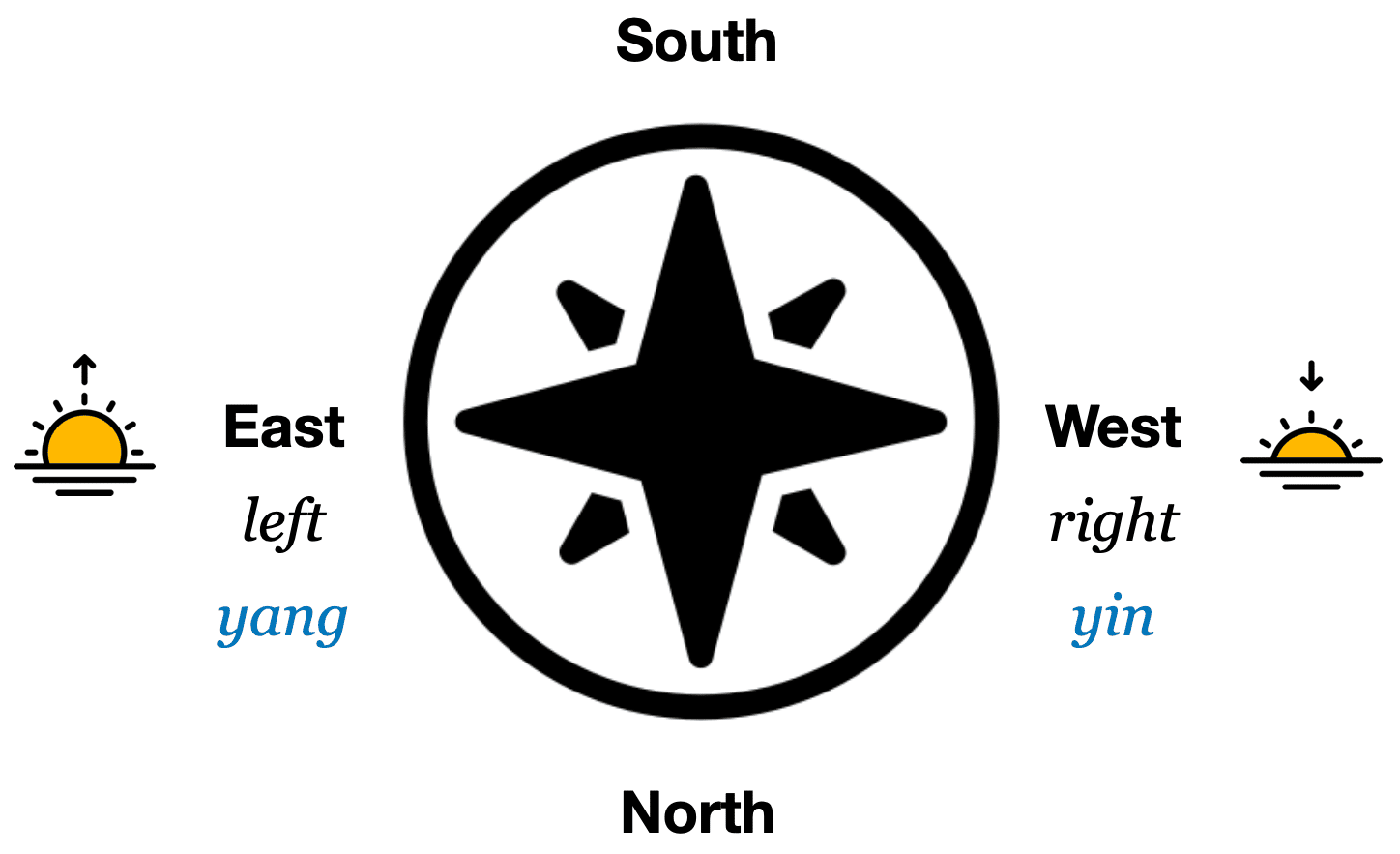
Yin and Yang
If you draw your map with South at the top of the page (or if you turn and face south like the sages and emperors did), that means that East is on your left and West is on your right.
East is the direction of the rising sun, which is yang. West is the direction of the setting sun, which is yin.
So that's why left is yang and right is yin.
(When opening the Eight Extraordinary Vessels, many practitioners needle the left side first in men and the right side first in women. When determining the sex of a fetus, a racing pulse on the left indicates a boy and a racing pulse on the right indicates a girl.)
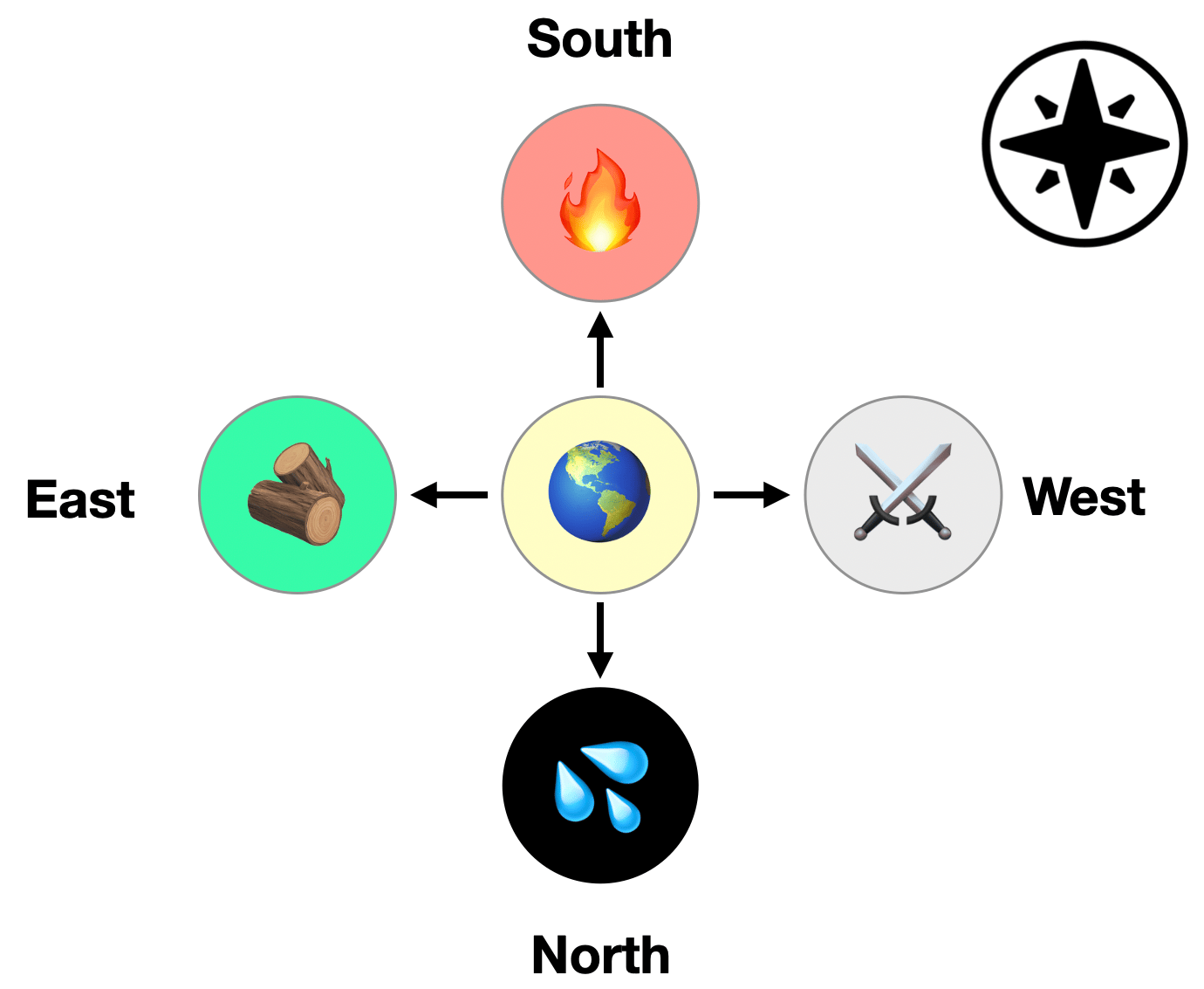
The Five Phases
This also shows up in a way we can represent the Five Phases.
We often draw the Five Phases in the order of the Sheng cycle. But you can also draw the Five Phases according to direction (with Earth in the middle).
If you remember that South is Up, then this makes sense with the organs as well. Your Heart (Fire) is in your upper body. Your Kidney (Water) is in the lower body. And the Spleen/Stomach (Earth) is in the middle.
(And if you look at it this way, that means that your Liver is on YOUR right, which is MY left, which is exactly where it should be. But that's a discussion for another time...)
You may also see this represented in things like facial diagnosis:
- Forehead = Heart (South/Up)
- Nose = Spleen (middle)
- Chin = Kidney (North/down)
- Left cheek = Liver
- Right cheek = Lung
There's a similar layout in some systems of abdominal palpation.
The Yangming Channel
So why are the Stomach and Large Intestine channels called the Yang Ming ("yang brightness") channel?
I mean, the back of the body is yang, and the front of the body is yin. The Stomach channel is on the front of the body, so if anything it should be called the Extreme Yin channel.
Well, if you're a sage facing south, then that means your Stomach channel is receiving the full brightness of the sun.
So that's why the Stomach channel is the Yang Brightness Channel.
